Abstract
In Japan, cauliflower agriculture has shown notable trends in recent years. By 2022, national harvest volumes peaked at 22.2kt, reflecting a consistent increase in production. The maximum cultivated area reached 1.25kha, indicating a stable expansion of farming space. Shipping volumes also reveal regional patterns, with Ibaraki leading at 2.51kt in 2022. Historically, cauliflower cultivation has seen growth due to rising demand and improved agricultural practices, with significant contributions from key prefectures like Ibaraki, which consistently report high shipping volumes.
Cauliflower yield (main data).
Japanese cauliflower production has experienced significant fluctuations since 1973. The peak was a notable 141kt in 1987. As of 2022, production stands at just 15.8% of that peak, reflecting a marked decline. This decrease suggests changes in agricultural practices, market demand, or competition with other vegetables. Despite the current low yield compared to the historic high, regional producers like Ibaraki continue to play a crucial role in supply. Overall, the trend indicates a shift in production dynamics, highlighting the need for strategic adjustments in cultivation and marketing practices.
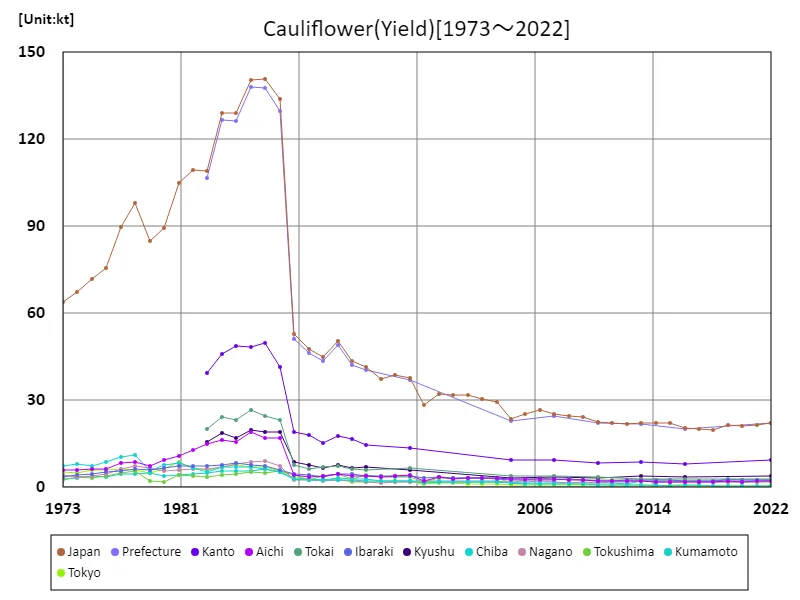

The maximum is 141kt[1987] of Japan, and the current value is about 15.8%
Cauliflower harvest volume (by prefecture).
In Japanese agriculture, leafy vegetable yields have shown distinct regional patterns. As of 2022, Ibaraki stands out with the highest yield at 2.66kt, underscoring its prominence in leafy vegetable production. This peak reflects Ibaraki’s consistent role as a leading producer. Historically, yields across Japan have varied, with regional differences influenced by local agricultural practices and climatic conditions. The current data highlights Ibaraki’s continued dominance in the sector, suggesting a stable production environment and effective farming strategies that have maintained high yield levels in recent years.
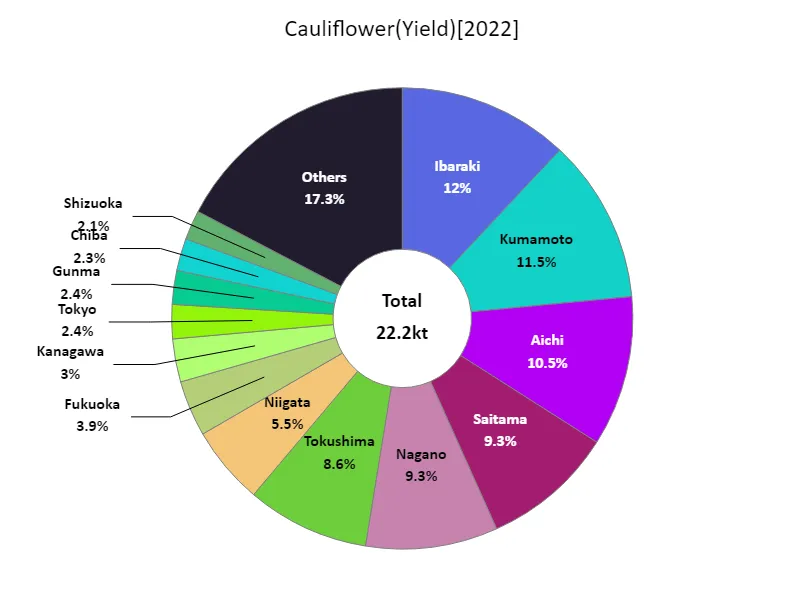

The maximum is 2.66kt of Ibaraki, the average is 473t, and the total is 22.2kt
Cauliflower planted area (main data).
Japanese cauliflower cultivation has seen notable changes since 1973. The peak cultivation area was 10.5kha in 1988. As of 2022, the area dedicated to cauliflower is 11.9% lower than this peak, reflecting a decline in the land used for growing this vegetable. This reduction suggests shifts in agricultural focus, possibly due to changes in market demand or the rise of alternative crops. Despite this decrease, the continued cultivation indicates ongoing interest, with regional variations influencing current practices and yield. The trend highlights evolving agricultural priorities and adaptations within Japan’s vegetable farming sector.
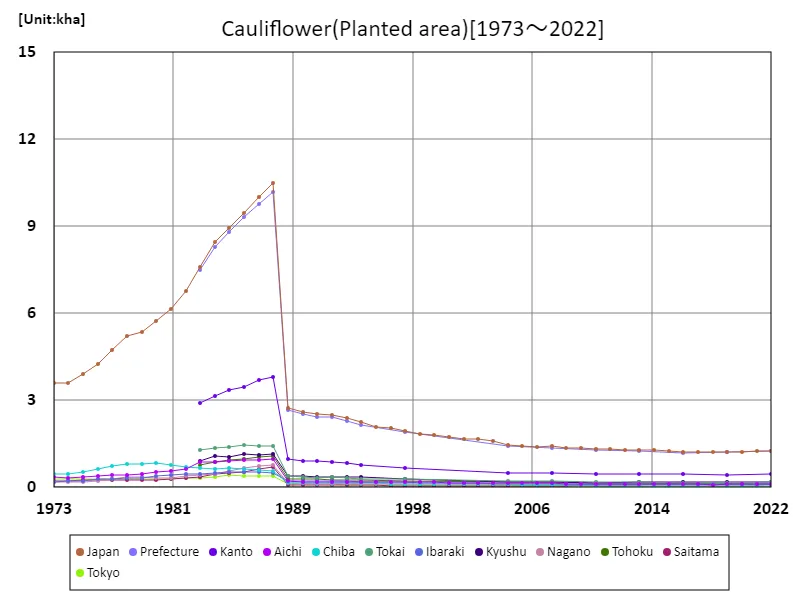

The maximum is 10.5kha[1988] of Japan, and the current value is about 11.9%
Cauliflower cultivation area (by prefecture).
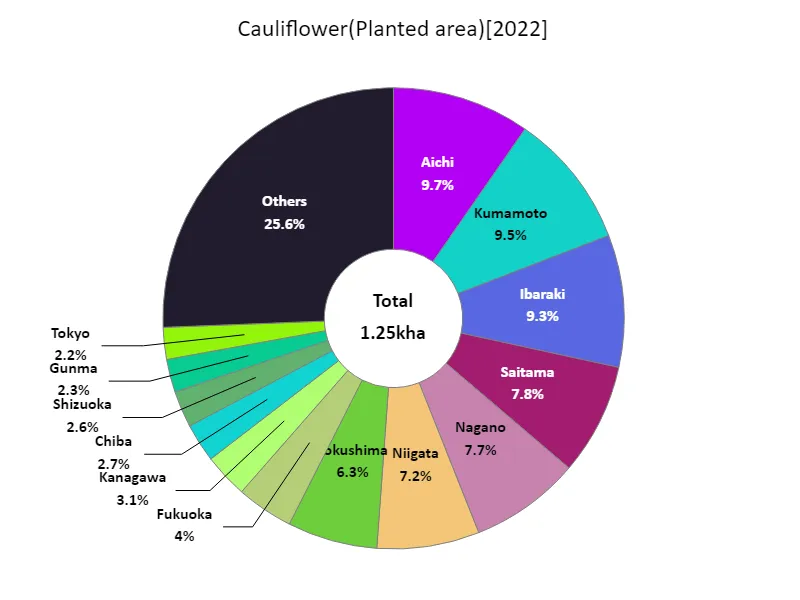

The maximum is 121ha of Aichi, the average is 26.7ha, and the total is 1.25kha
Cauliflower shipment volume.
In 2022, Ibaraki Prefecture led Japanese cauliflower shipping with a substantial volume of 2.51kt, demonstrating its dominance in the sector. This figure contrasts with the national average shipping volume of 408t and a total national volume of 19.2kt. Ibaraki’s high shipping volume highlights its key role in Japan’s cauliflower supply chain. Historically, shipping volumes have fluctuated based on regional production capacities and market demand. The current data underscores Ibaraki’s continued strength in cauliflower production and distribution, reflecting its strategic importance in meeting national demand.
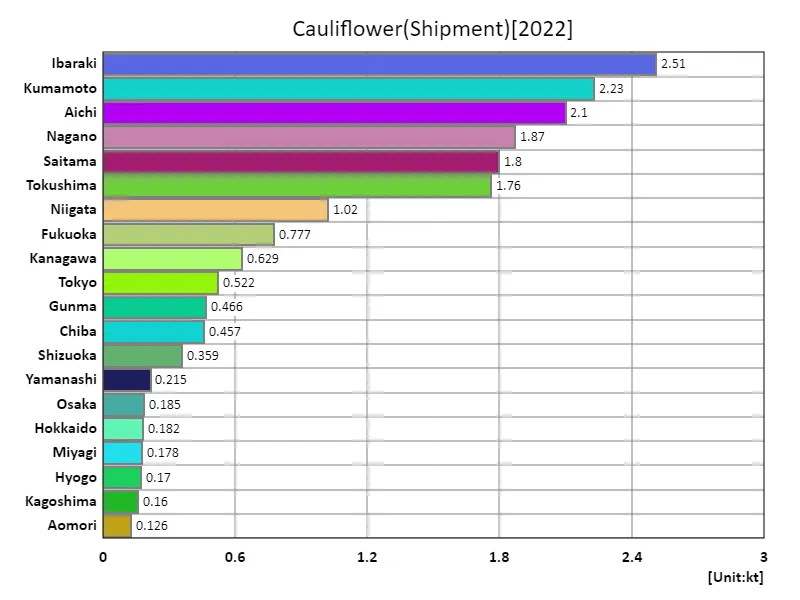

The maximum is 2.51kt of Ibaraki, the average is 408t, and the total is 19.2kt
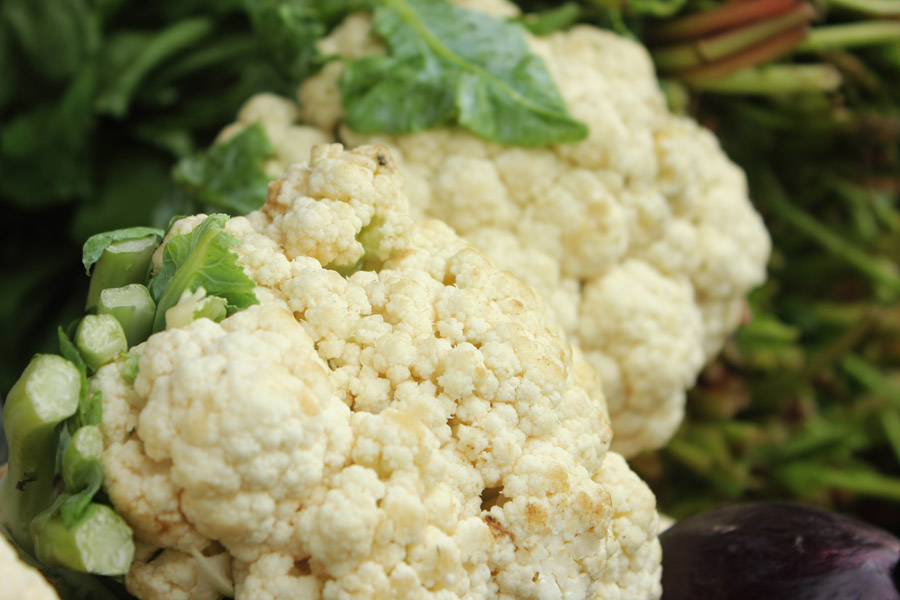


Comments